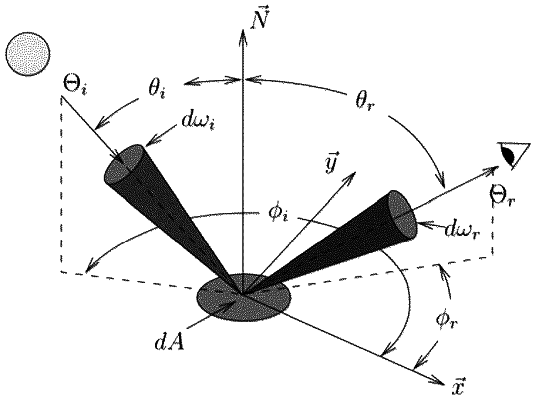| CPC G06T 15/506 (2013.01) [G06T 15/205 (2013.01)] | 2 Claims |

|
1. A method for rendering a three-dimensional image of a material on the basis of hemispherical orthogonal function, including the following steps:
S1: selecting a rendering tablet, and establishing a local coordinate system;
S2: getting a bidirectional reflection distribution function of the material;
S3: determining if global light is an orthogonal function; if it is, performing step S4 and S5; if not, proceeding to step S4′ and S5′;
S4: determining a rotation matrix of an orthogonal function coefficient according to a corner of a global coordinate system and the local coordinate system, and calculating a local orthogonal function of the local coordinate system;
S5: according to an equivalent formula, converting the local orthogonal function to the hemispherical orthogonal function; wherein the hemispherical orthogonal function includes a hemispherical harmonic function, a Zernike hemisphere function, and a vertical hemisphere function;
S4′: sampling an upper half of a ball, and obtaining a spatial distribution of light;
S5′: fitting light distribution with hemispherical orthogonal functions, obtaining a slime orthogonal function of the light;
S6: determining a direction of reflected light, and obtaining a spatial distribution of a two-way reflection distribution function of the material;
S7: fitting the two-way reflection distribution function of the material with the hemispherical orthogonal function, and obtaining a hemispherical orthogonal function factor of the two-way reflection distribution function of the material;
S8: multiplying a hemispherical orthogonal function coefficient of light by a half-way reflection distribution function of the material and accumulating light intensity of a reflection direction based on the multiplied hemispherical orthogonal function coefficient of light; and
S9: rendering the three-dimensional image of the material using the accumulated light intensity of the rejection direction.
|